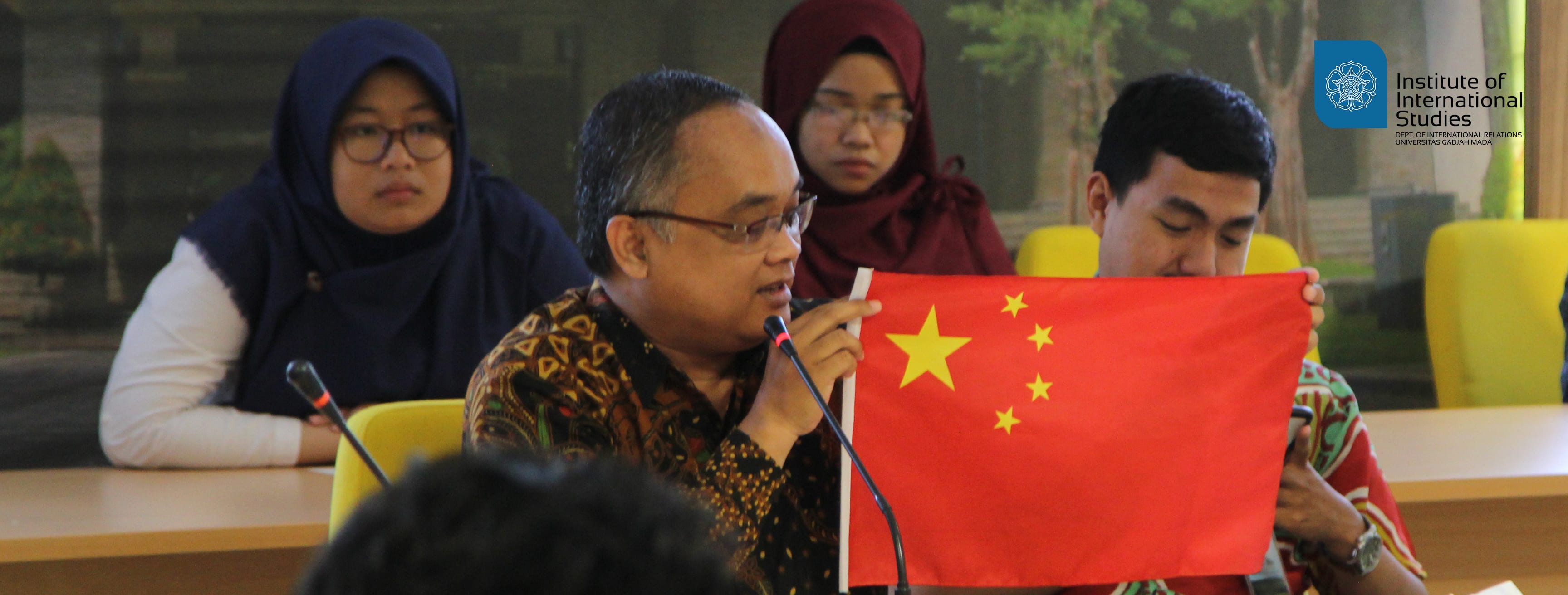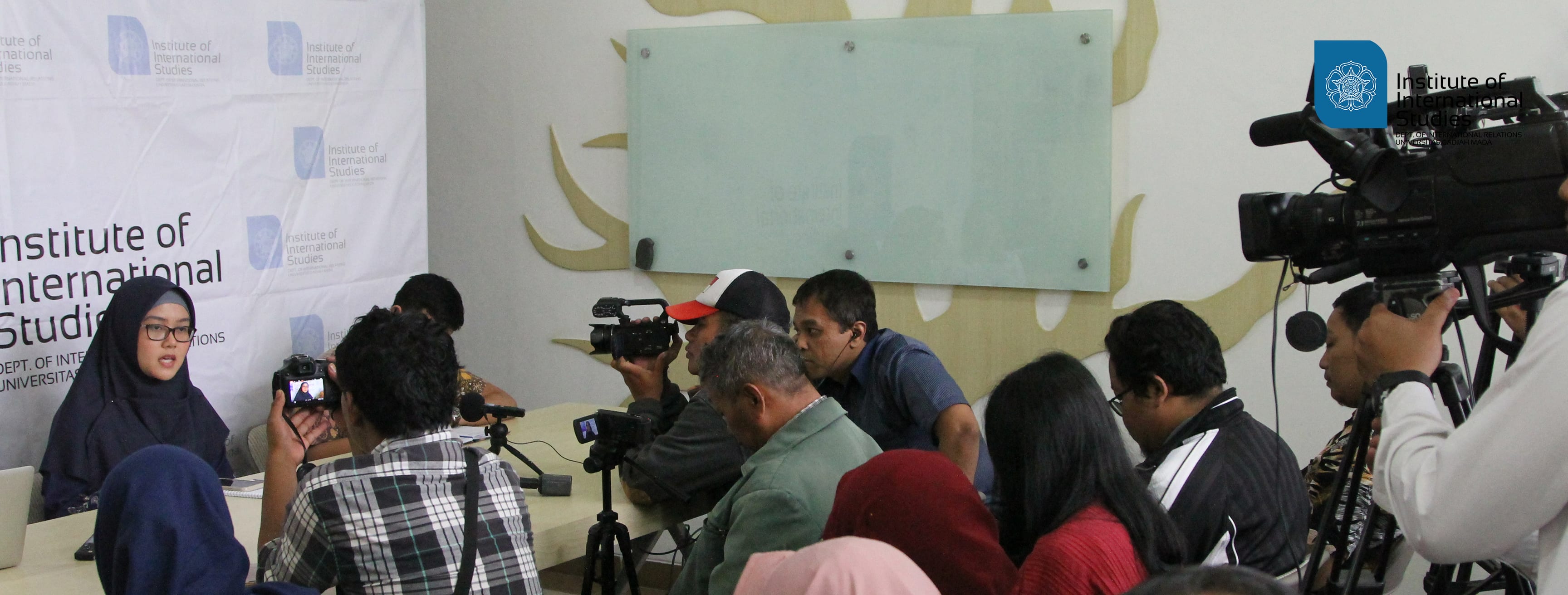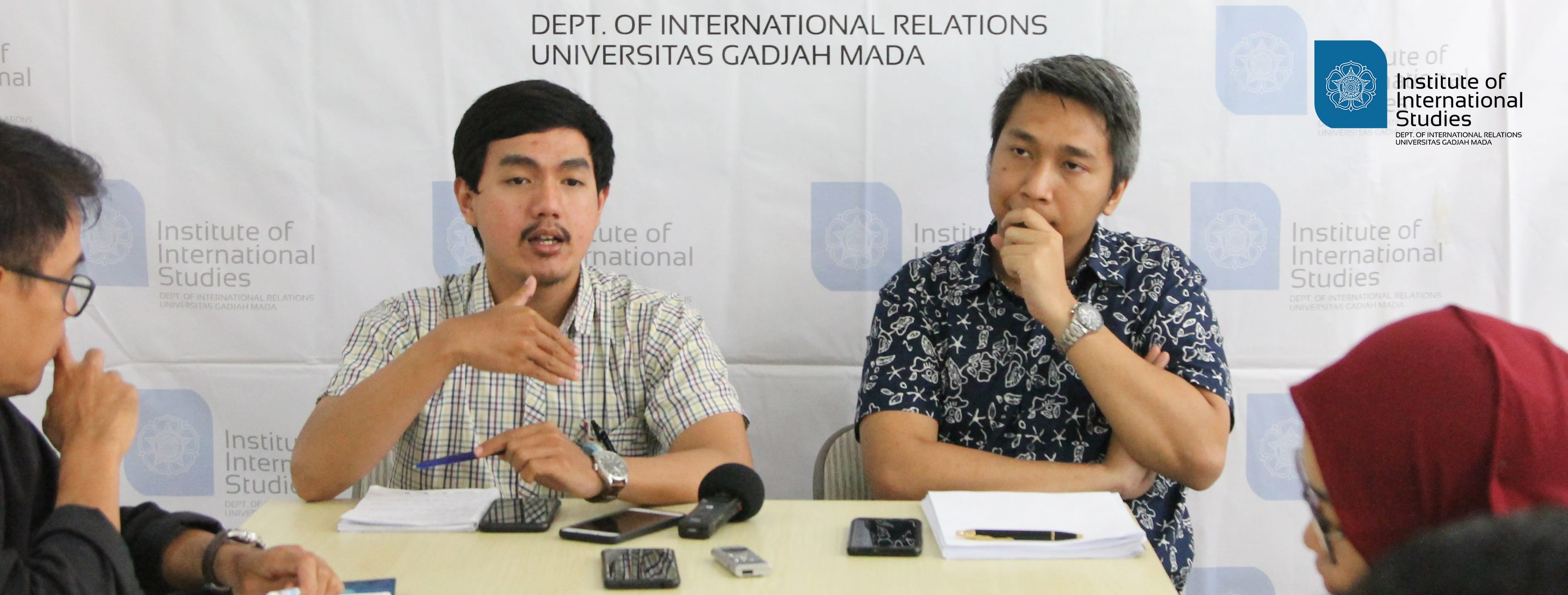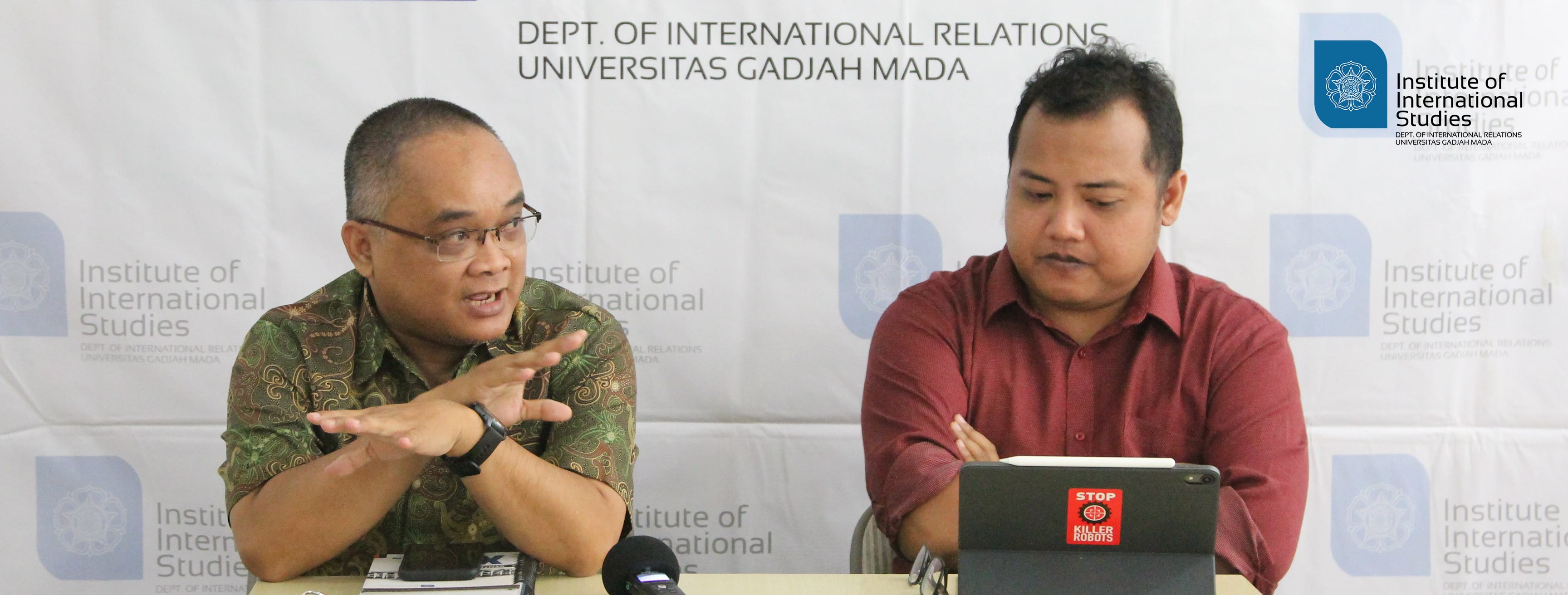Pada hari Senin, 24 Februari 2020 Institute of International Studies, Universitas Gadjah Mada (IIS UGM) menyelenggarakan sesi ketiga kegiatan Globalization Talk yang bertajuk “Global Citizenship and Educating on Globalization”. Dalam kegiatan ini, IIS UGM berkesempatan mengundang Prof. Dr. Ayami Nakaya, Associate Professor dari Graduate School for International Development and Cooperation (IDEC) Hiroshima University, yang didampingi oleh Dr. Riza Noer Arfani, Direktur IIS UGM untuk menyampaikan materinya mengenai globalisasi, kewarganegaraan global dan Pendidikan dalam menghadapi globalisasi. Selain para pembicara, IIS UGM juga mengundang Cut Intan Aulianisa Isma, manajer IIS UGM yang berperan sebagai moderator dan beberapa perwakilan guru dari Sekolah Menengah Atas (SMA) Lingkup Daerah Istimewa Yogyakarta sebagai peserta tamu.
Acara dibuka dengan pemaparan oleh Nakaya yang menyampaikan pengantar mengenai fenomena globalisasi. Globalisasi tentunya membawa efek global ke berbagai kalangan, baik itu dampak positif maupun negatif. Sebagai contoh, salah satu dampak positif globalisasi adalah persebaran informasi yang lebih cepat, sehingga masyarakat global lebih cepat mengakses sebuah informasi. Namun, persebaran informasi yang cepat tersebut juga diikuti oleh tren penyebaran informasi yang salah (hoax) ataupun informasi yang belum dapat ditentukan kebenarannya, sehingga justru menimbulkan kepanikan maupun keresahan bagi masyarakat. Pengantar ini ditutup dengan sebuah pertanyaan yang menarik dari Nakaya, yaitu: “Siapakah yang dapat menangkal aspek negatif dan mengoptimalkan aspek positif dari globalisasi?”
Sesi pembahasan materi dilanjutkan Nakaya dengan membahas mengenai penjabaran dari “Global Citizenship.” Global Citizenship merupakan solusi yang membuat masyarakat dapat mempersiapkan diri untuk menghadapi dampak-dampak globalisasi, baik dampak positif maupun negatif. Nakaya menjelaskan, global citizenship dapat ditandai dengan beberapa ciri: yaitu (1) mampu menerima diversitas dan dapat menghormati hak asasi manusia, (2) memiliki pola pikir yang bersifat kolaboratif dan kooperatif dengan manusia lain untuk menyelesaikan sebuah masalah secara kolektif tanpa konflik, dan (3) memainkan peran aktif dan bersifat positif dalam tatanan masyarakat global. Untuk memiliki ciri-ciri tersebut, diperlukan beberapa elemen umum yang harus dipenuhi, yaitu attitude, deep knowledge, cognitive skills, non-cognitive skills dan behavioral capacities.
[layerslider id=”24″]
Untuk memenuhi elemen-elemen penting tersebutlah, maka edukasi globalisasi diperlukan. Edukasi globalisasi berperan untuk menumbuhkan literasi politik yang baik, sense of violence, dan orientasi social justice. Literasi politik merupakan sebuah keharusan dalam memahami globalisasi dan pengaruh-pengaruhnya, sehingga kita dapat merespon persebaran globalisasi dengan tepat. Sense of violence merupakan kesadaran atas bentuk-bentuk kekerasan, mulai dari direct violence hingga ecological violence. Aspek social justice ditandai dengan pemahaman akan konsep justice yang sangat beragam dan tidak rigid, sehingga muncul pemikiran untuk memastikan keadilan dan kesetaraan untuk semua pihak. Seluruh aspek diatas dapat dikembangkan melalui proses edukasi globalisasi yang tepat dan diterapkan di Indonesia
Untuk meningkatkan kualitas Global Citizenship, Nakaya menawarkan konsep Resident Oriented Tourism sebagai sarana pengembangnya. Resident oriented tourism sendiri merupakan sebuah bentuk interaksi pariwisata timbal-balik, yang tidak hanya membawa keuntungan bagi turis yang berkunjung namun juga penduduk lokal daerah tersebut, dan tentunya akan membantu mengembangkan kualitas sumber daya manusia di lokasi pariwisata. Untuk merealisasikannya, elemen-elemen masyarakat lokal harus berpartisipasi aktif dalam penyelenggaraan pariwisata tersebut, dan merubah nilai -nilai dan imej eksklusivitas dengan nilai-nilai yang ramah terhadap diversitas global. Yogyakarta sendiri dinilai Nakaya merupakan sebuah lokasi yang cocok untuk mengembangkan resident oriented tourism dan edukasi globalisasi, karena statusnya sebagai pusat budaya dan pendidikan di Indonesia. Daerah Istimewa Yogyakarta dapat berperan menjadi pusat edukasi global citizenship lewat metode resident oriented tourism, dengan menjunjung nulai-nilai keramahan, kebanggaan akan budaya lokal, kreativitas, dan partisipasi aktif dalam menciptakan destinasi pariwisata yang dapat menerima masyarakat global.
Pemaparan Nakaya ditutup oleh Riza yang menyatakan dukungannya atas pentingnya posisi Yogyakarta sebagai pusat ekonomi dan pendidikan di Indonesia. Yogyakarta merupakan daerah yang memiliki potensi pariwisata yang luar biasa, dan menawarkan potensi pertukaran ide, pengalaman dan informasi yang potensial. Sektor Pendidikan dapat menjadi jangkar yang menjadi fokus pengembangan pariwisata tersebut. Sebagai direktur IIS, Riza juga menyatakan kesiapan dan kesediaan IIS dalam mendukung edukasi masyarakat Yogyakarta tentang globalisasi, yang sejalan dengan hilirisasi riset IIS dan berbentuk advokasi. Kesiapan ini tercermin dengan penyelenggaraan dua edisi Globalization Talk sebelumnya, yaitu Globalisation Talk #1 (Jogja Creative Industry Forum) dan #2 (Jogja Tourism and Governance Forum) oleh IIS UGM.
Penulis : Raditya Bomantara
Penyunting : Angganararas Indriyosanti







